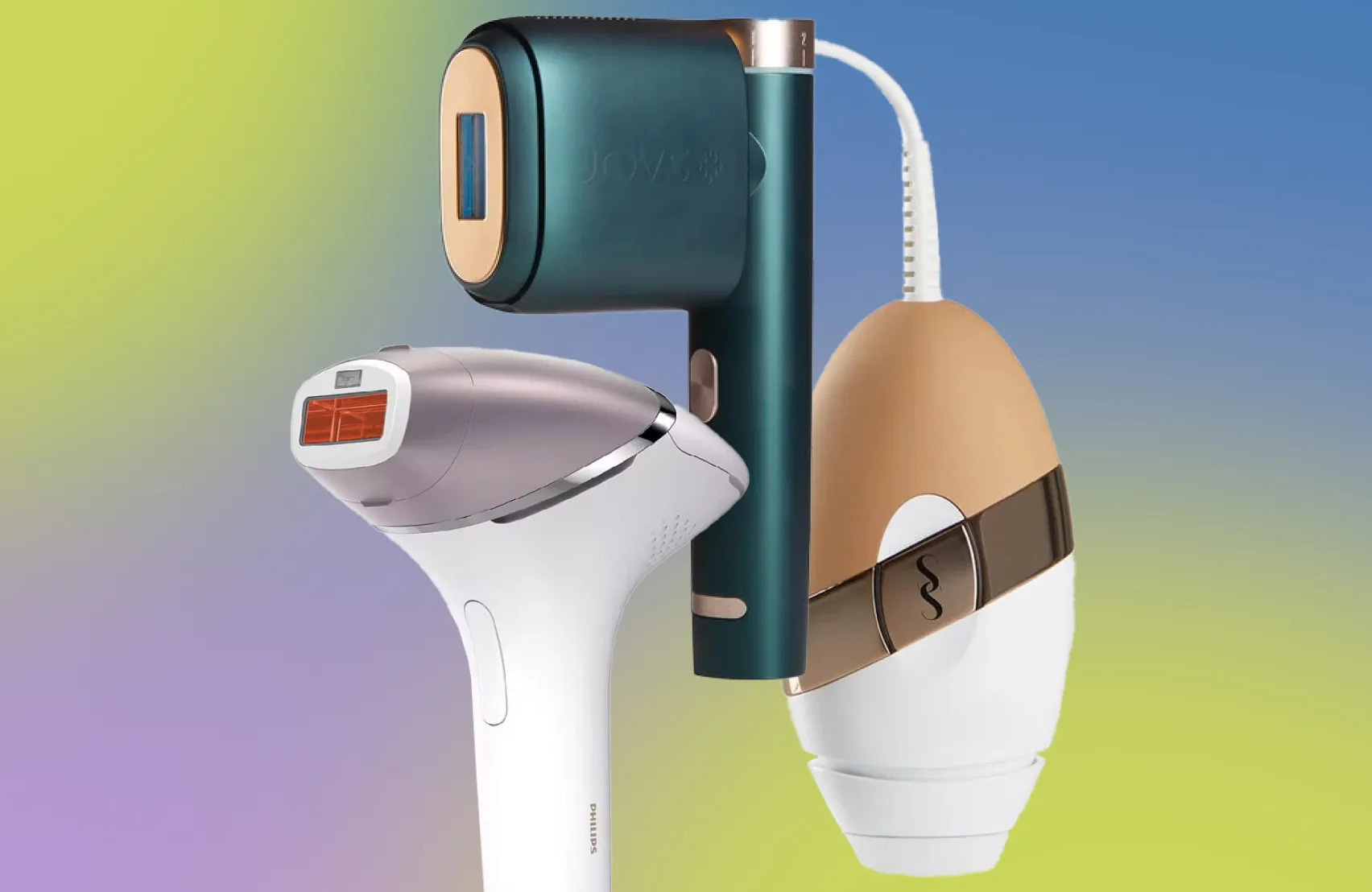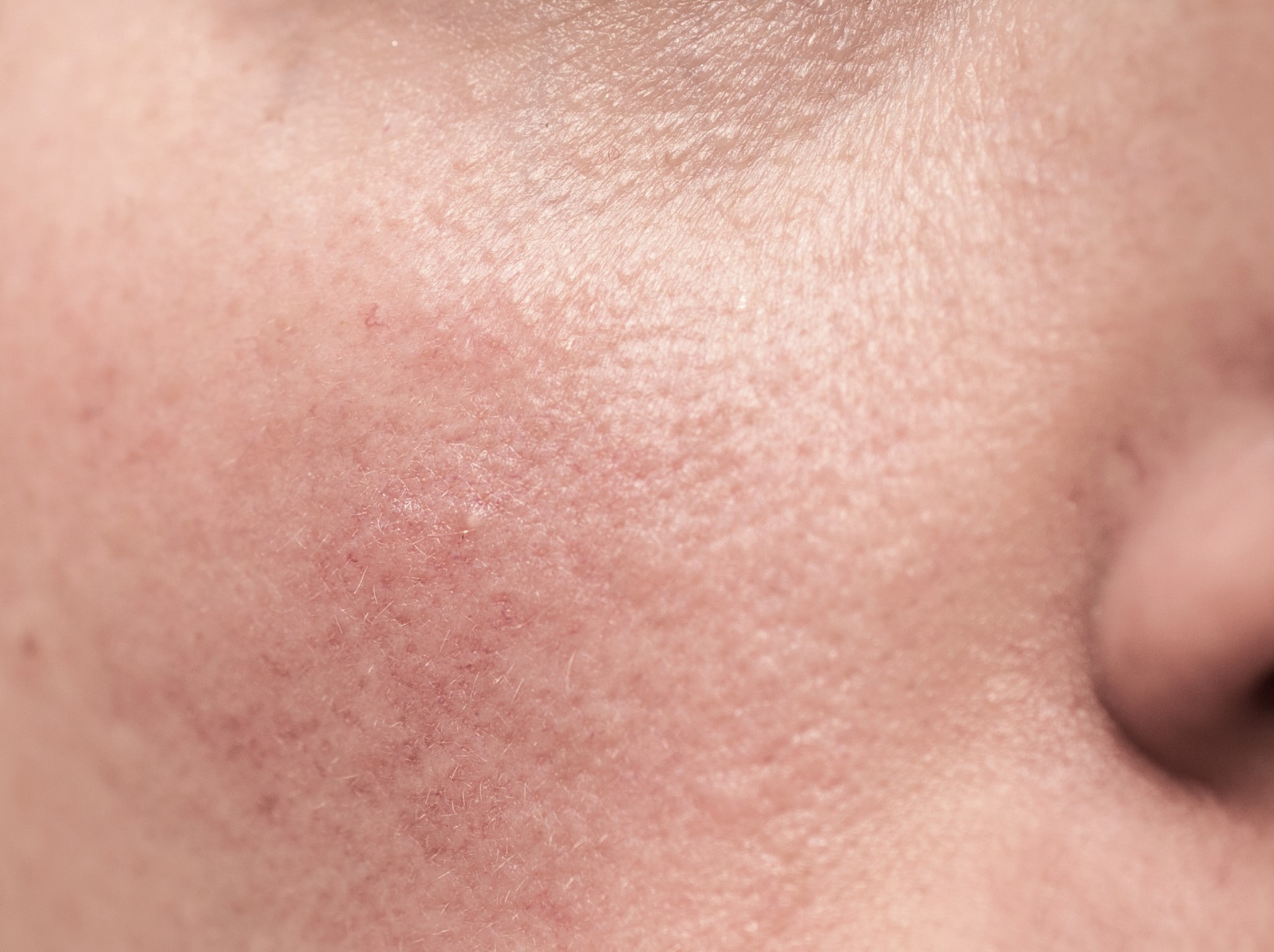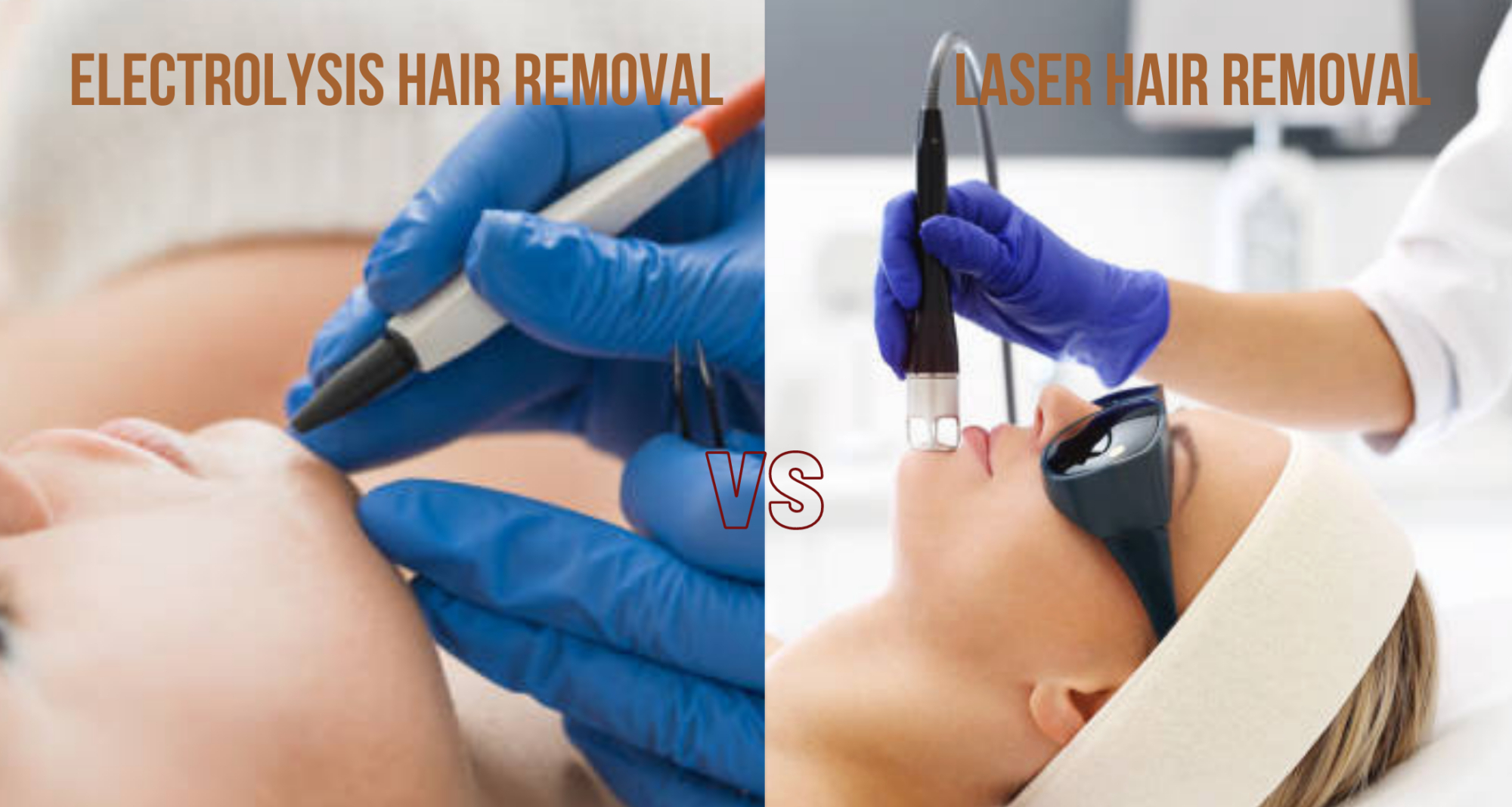Home>FAQs>What Is Considered Small Area For Laser Hair Removal


FAQs
What Is Considered Small Area For Laser Hair Removal
Modified: August 5, 2023
Find out what is considered a small area for laser hair removal and get answers to all your general questions about this popular procedure.
(Many of the links in this article redirect to a specific reviewed product. Your purchase of these products through affiliate links helps to generate commission for Under-tec.com, at no extra cost. Learn more)
Table of Contents
Introduction
Laser hair removal has become an increasingly popular option for individuals seeking a long-term solution to unwanted body hair. With its ability to provide semi-permanent hair reduction, laser hair removal offers a convenient and effective alternative to traditional hair removal methods such as shaving, waxing, and plucking.
One important factor to consider when undergoing laser hair removal is the size of the treatment area. The size of the area being treated can impact various aspects of the procedure, including the time required for treatment, the cost, and the overall effectiveness of the results.
In this article, we will explore the concept of “small areas” in laser hair removal, including what is considered a small area, common examples of small areas, and the factors to consider when determining the size of the treatment area. Additionally, we will discuss the benefits and limitations of treating small areas with laser hair removal.
Laser hair removal works by targeting the pigment in the hair follicles, delivering concentrated beams of light that are absorbed by the hair follicles. This heat energy damages the hair follicles, inhibiting future hair growth.
While laser hair removal can be performed on any part of the body, the size of the treatment area plays a crucial role in determining the overall success of the procedure. Treating smaller areas allows for greater precision and customization, ensuring that only the unwanted hair is targeted while minimizing the risk of damage to surrounding tissues.
It is worth noting that laser hair removal is a safe and FDA-approved procedure when performed by a trained and licensed professional. However, the effectiveness and success of the treatment can vary depending on various factors, including individual hair growth patterns, hair color, skin type, and the size of the treatment area.
Now, let us delve deeper into the role of area size in laser hair removal and explore the specific considerations for treating small areas.
Understanding Laser Hair Removal
Laser hair removal is a cosmetic procedure that involves using laser technology to permanently reduce or eliminate unwanted hair on the body. It is a non-invasive and relatively painless treatment that results in long-term hair reduction.
The process of laser hair removal works by targeting the melanin pigment in the hair follicles. The laser emits a concentrated beam of light that is absorbed by the pigment, thereby damaging the hair follicle and inhibiting future hair growth.
It is important to note that laser hair removal is most effective on individuals with fair to medium skin tones and dark hair. This is because the laser is better able to differentiate between the pigment in the hair and the surrounding skin, reducing the risk of skin damage.
During a laser hair removal treatment, the technician or dermatologist will use a handheld device that emits the laser light. The device is moved over the treatment area, targeting each hair follicle individually. The sensation experienced during the procedure is often described as a mild stinging or snapping sensation, similar to the feeling of a rubber band being snapped against the skin.
Multiple sessions of laser hair removal are typically required to achieve the desired results. This is because hair grows in cycles, and laser hair removal is most effective when targeting hair follicles in the active growth phase. The number of sessions needed varies depending on factors such as the individual’s hair type, the treatment area, and the desired level of hair reduction.
It is important to note that laser hair removal is not completely permanent. While it significantly reduces hair growth and can result in long-lasting hair reduction, some hair may still regrow over time. However, the regrowth is usually finer and lighter in color, making it less noticeable.
Before undergoing laser hair removal, it is recommended to consult with a qualified professional to assess your suitability for the treatment and to discuss your desired outcomes. They will evaluate factors such as your skin type, hair color, medical history, and any existing skin conditions to determine the best approach for you.
In the next section, we will explore the role of area size in laser hair removal and its implications for the treatment process and outcome.
The Role of Area Size in Laser Hair Removal
When it comes to laser hair removal, the size of the treatment area plays a vital role in determining various aspects of the procedure. From the time and cost involved to the overall effectiveness of the results, understanding the role of area size can help you make informed decisions about your laser hair removal journey.
The size of the treatment area directly impacts the time required for each session. Treating a small area, such as the upper lip or underarms, can typically be completed in just a few minutes. On the other hand, larger areas like the back or full legs may require significantly more time. Understanding the time commitment associated with different treatment areas can help you plan your appointments accordingly.
In addition to time, area size also affects the cost of laser hair removal. Most clinics charge based on the size of the treatment area, with larger areas generally costing more. It is essential to consider your budget and prioritize which areas are most important to you if you have multiple areas you’d like to treat. Some clinics offer package deals or discounts for multiple areas, so it’s worth exploring your options to find the best value for your investment.
The effectiveness of laser hair removal can also be influenced by the size of the treatment area. Smaller areas tend to yield better results as they allow for higher precision and accuracy. The laser can be targeted directly at each individual hair follicle, ensuring optimal coverage and reducing the chances of missed or skipped spots. Treating larger areas may be more challenging, and there is a higher risk of potential areas being overlooked or not adequately treated.
It is important to note that treating larger areas may require multiple passes with the laser to ensure comprehensive coverage. This can increase the overall treatment time and potential discomfort during the procedure. Therefore, it is crucial to discuss your desired outcomes and expectations with your laser hair removal technician to ensure they allocate sufficient time for thorough treatment.
Lastly, the size of the treatment area affects the recovery and aftercare process. Smaller areas typically heal faster and require less maintenance post-treatment. On the other hand, larger areas may take longer to heal, and you may need to follow specific instructions provided by your technician to ensure proper care and minimize any potential side effects.
Understanding the role of area size in laser hair removal allows you to make informed decisions about which areas to prioritize, allocate your resources effectively, and have realistic expectations for the treatment process and outcomes. In the next section, we will delve into specific examples of small areas commonly treated with laser hair removal.
Small Areas for Laser Hair Removal
When it comes to laser hair removal, small areas refer to smaller regions of the body that can be treated individually. These areas are typically characterized by their relatively small size, making them ideal candidates for targeted and precise hair removal treatment.
Some common examples of small areas that are frequently treated with laser hair removal include:
- Upper Lip: The upper lip area is a popular choice for laser hair removal due to its small size and the presence of unwanted hair growth. Many individuals struggle with hair on the upper lip, whether it be peach fuzz or darker and thicker hair. Laser hair removal can effectively target and reduce the growth of hair in this area, providing a smooth and hair-free upper lip.
- Underarms: The underarm area is another small area that is commonly treated with laser hair removal. Many people opt for this treatment to eliminate underarm hair and reduce the need for regular shaving or waxing. The precision of laser hair removal allows for targeted removal of the hair follicles in the underarm area, resulting in longer-lasting results and reduced irritation.
- Bikini Line: Laser hair removal for the bikini line is a popular choice for individuals who want to eliminate unwanted hair along the edges of the bikini area. The small size of the treatment area makes it an accessible and effective option for achieving smooth and hair-free skin in this area.
- Chin and Jawline: Unwanted facial hair, especially along the chin and jawline, can be a source of frustration for many individuals. Laser hair removal can target and remove hair follicles in these small areas, reducing the need for constant plucking or waxing.
- Sideburns: For individuals who have unwanted hair on the sideburns, laser hair removal can provide a long-lasting solution. The small size of this area makes it an ideal candidate for laser treatment, ensuring precise removal of hair follicles without affecting the surrounding skin.
- Neckline: The neckline is another small area that is frequently treated with laser hair removal. Unwanted hair along the neckline can be particularly bothersome and can impact one’s self-confidence. Laser hair removal can effectively target and reduce the hair growth in this area.
These are just a few examples of small areas that can be treated with laser hair removal. It’s important to note that each individual’s hair growth patterns and preferences may vary, so it’s crucial to consult with a trained professional to discuss your specific needs and goals.
Now that we have explored some common small areas for laser hair removal, let’s move on to discussing the factors to consider when determining the size of the treatment area.
Common Small Areas for Laser Hair Removal
When it comes to laser hair removal, there are several common small areas that individuals often choose to treat. These areas are known for their relatively small size, making them perfect candidates for precise and targeted hair removal.
Let’s take a closer look at some of the most frequently treated small areas for laser hair removal:
- Upper Lip: The upper lip is a popular area for laser hair removal, especially for individuals who struggle with unwanted hair growth in this region. Hair on the upper lip can be a source of self-consciousness and constant maintenance. Laser hair removal effectively targets and reduces the growth of hair on the upper lip, providing long-lasting results and smooth skin.
- Underarms: The underarm area is a common choice for laser hair removal due to its small size and the prevalence of unwanted hair. Many people opt for this treatment to eliminate the need for frequent shaving or waxing in the underarm area. Laser hair removal can effectively target the hair follicles in this small area, leading to long-lasting hair reduction and smoother underarms.
- Bikini Line: Laser hair removal for the bikini line is a popular option for individuals who want to remove unwanted hair along the edges of the bikini area. The small size of this area makes it easily treatable and allows for precision in targeting the hair follicles. Laser hair removal in the bikini line area results in smoother and hair-free skin, providing confidence and convenience.
- Chin and Jawline: Unwanted hair on the chin and jawline can be a common concern, particularly for women. Laser hair removal can effectively target and remove hair follicles in these small areas, reducing the need for constant plucking or waxing. The treatment results in smoother and hair-free skin, restoring confidence in one’s appearance.
- Sideburns: For individuals dealing with unwanted hair on the sideburns, laser hair removal offers a long-term solution. The small size of this area makes it ideal for laser treatment, as it allows for precise removal of hair follicles without affecting the surrounding skin. Laser hair removal in the sideburns area provides a smooth and hair-free appearance.
- Neckline: Unwanted hair along the neckline can be bothersome, particularly for individuals with certain hairstyles or those who wear open-necked clothing. Laser hair removal in the neckline area effectively targets and reduces hair growth, providing a cleaner and more polished appearance.
These are just a few examples of common small areas that individuals often choose to treat with laser hair removal. It’s important to remember that everyone’s hair growth patterns and preferences may vary, so it’s essential to consult with a trained professional to determine the best treatment plan for your specific needs and goals.
Now that we have explored some common small areas for laser hair removal, let’s move on to discussing the factors to consider when determining the size of the treatment area.
Factors to Consider When Determining Small Areas
When deciding on the size of the treatment area for laser hair removal, several factors should be taken into consideration. These factors can play a significant role in determining the effectiveness, cost, and overall satisfaction with the treatment. Let’s explore some key factors to consider when determining small areas for laser hair removal:
- Hair Growth Patterns: The growth patterns of your hair can impact the size of the treatment area. If you have hair growth in specific patches or concentrated areas, targeting those small areas may be more effective than treating a larger area. Understanding your hair growth patterns can help you determine which areas to prioritize for laser hair removal.
- Skin Sensitivity: The sensitivity of your skin is an important factor to consider when determining the size of the treatment area. If you have sensitive skin, it may be more comfortable and less likely to experience adverse reactions if you opt for smaller treatment areas. Treating smaller areas allows for greater precision and minimizes the exposure of sensitive skin to the laser.
- Budget and Time Constraints: Your budget and time constraints can also influence the size of the treatment area. Treating larger areas may require more sessions and increase the overall cost of the treatment. On the other hand, treating smaller areas may allow you to spread out the sessions and budget your treatments more effectively. Consider your financial capabilities and schedule when determining the size of the treatment area.
- Desired Outcome: The desired outcome of the treatment is an important factor to consider. If your goal is to completely remove hair from a specific small area, such as the upper lip, treating only that area may be sufficient. However, if you want a more comprehensive hair reduction across a larger region, you may need to treat multiple small areas or consider treating a larger area altogether.
- Individual Preferences: Your personal preferences and priorities should also be taken into account. Some individuals may prioritize treating small areas that are frequently exposed or cause particular discomfort, while others may focus on targeting larger areas for more comprehensive results. It’s important to communicate your preferences to your laser hair removal technician to ensure they design a treatment plan tailored to your needs.
By considering these factors, you can make a more informed decision about the size of the treatment area for laser hair removal. Remember, it’s crucial to consult with a qualified professional who can assess your individual needs and provide expert guidance based on your unique circumstances.
Now that we have discussed the factors to consider when determining the size of the treatment area, let’s delve into the benefits and limitations of treating small areas with laser hair removal.
Benefits and Limitations of Treating Small Areas
Treating small areas with laser hair removal offers several benefits, but it also comes with its limitations. Understanding these advantages and limitations can help you make an informed decision about the size of the treatment area and set realistic expectations for your laser hair removal journey.
Let’s explore the benefits of treating small areas with laser hair removal:
- Accuracy and Precision: Treating small areas allows for greater accuracy and precision during the laser hair removal process. The laser can be targeted directly at each individual hair follicle, ensuring optimal coverage and reducing the chances of missed or skipped spots. This results in more effective hair reduction and a smoother overall outcome.
- Cost-Effectiveness: Treating small areas can be more cost-effective compared to treating larger areas. The cost of laser hair removal is often based on the size of the treatment area. By focusing on smaller areas, you can save on the overall cost of the treatment. This may allow you to allocate your resources more efficiently and treat additional areas or invest in additional laser sessions for optimal results.
- Faster Treatment Sessions: Treating small areas requires less time compared to treating larger areas. This means that the individual treatment sessions for small areas, such as the upper lip or underarms, can be completed relatively quickly. If you have a busy schedule or limited time for appointments, focusing on smaller areas can be more convenient and allow for easier integration into your routine.
- Reduced Discomfort: Treating small areas can also lead to reduced discomfort during the laser hair removal process. Smaller treatment areas typically involve less surface area, resulting in a quicker and less painful experience. If you have a low pain threshold or are concerned about discomfort, focusing on smaller areas can be more tolerable and manageable.
Despite the numerous benefits, there are limitations to treating small areas with laser hair removal:
- Multiple Treatment Sessions: Treating small areas may require multiple treatment sessions to achieve the desired results. Laser hair removal is most effective when targeting hair follicles in the active growth phase. Since not all hair follicles are active at the same time, multiple sessions are necessary to target hair in various growth stages. Therefore, treating small areas may necessitate more frequent visits to the clinic for optimal outcomes.
- Potential Overlooked Areas: Treating larger areas may pose a higher risk of potential areas being overlooked or not adequately treated. The precision required to target smaller areas reduces the chances of missing or skipping hair follicles. However, when treating larger areas, it is essential to ensure comprehensive coverage, as missing spots can result in incomplete hair reduction and less satisfactory results.
- Individual Hair Growth Patterns: Individual hair growth patterns can also influence the limitations of treating small areas. Some individuals may have hair growth that extends beyond a localized small area, requiring additional treatment in adjacent regions for more comprehensive results. Consulting with a trained technician will allow for a better understanding of the extent of treatment needed for your specific hair growth patterns.
By considering the benefits and limitations of treating small areas with laser hair removal, you can make a well-informed decision about the size of the treatment area. It is crucial to discuss your preferences, goals, and concerns with a qualified laser hair removal technician, as they can provide you with personalized advice based on your unique circumstances.
Now, let’s conclude our exploration of laser hair removal and summarize the key points discussed in this article.
Conclusion
Laser hair removal is a popular and effective solution for individuals seeking long-term hair reduction. When it comes to laser hair removal, the size of the treatment area plays a crucial role in determining various aspects of the procedure, including time, cost, and effectiveness. Treating small areas offers several benefits, such as increased accuracy, cost-effectiveness, faster treatment sessions, and reduced discomfort.
Common small areas for laser hair removal include the upper lip, underarms, bikini line, chin and jawline, sideburns, and neckline. Factors to consider when determining the size of the treatment area include hair growth patterns, skin sensitivity, budget and time constraints, desired outcomes, and individual preferences.
Treating small areas allows for greater precision and customization, ensuring optimal coverage and reducing the chances of missed or skipped spots. It can be more cost-effective compared to treating larger areas, and the treatment sessions are typically faster and less uncomfortable. However, treating small areas may require multiple sessions and may not address hair growth beyond the localized treatment area.
Consulting with a qualified professional is crucial to assess your individual needs, preferences, and expectations. They can create a treatment plan tailored to your unique circumstances, ensuring the best possible outcomes.
Whether you opt for laser hair removal on small or larger areas, it is essential to remember that results can vary depending on various factors, such as hair color, skin type, and individual response to the treatment. However, laser hair removal overall offers significant hair reduction and a longer-lasting alternative to traditional hair removal methods.
Now that you have a better understanding of the role of area size in laser hair removal and the considerations associated with treating small areas, you can make informed decisions to achieve your desired results and enjoy the benefits of smooth and hair-free skin.








